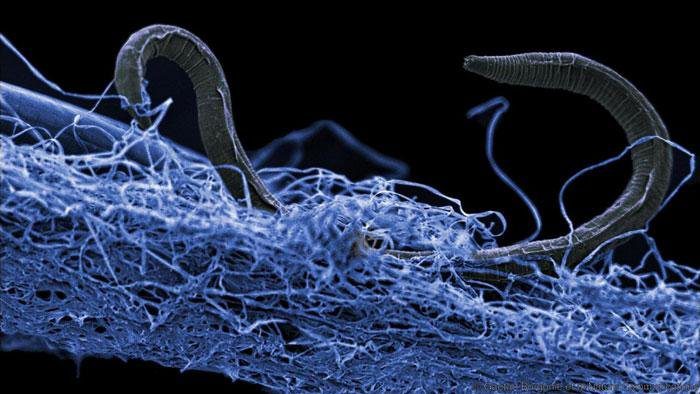Beneath your feet in the depths of our planet, there’s an unbelievably vast ecosystem teeming with life. In recent years, a massive international team of scientists revealed how billions upon billions of microorganisms live miles beneath Earth’s subsurface.
Presenting their work at the American Geophysical Union’s annual meeting in 2018, the researchers calculated the size of this mysterious treasure trove of life for the first time – and it was way bigger than they expected.
They reported that approximately 70 percent of the total number of microbes on the planet live underground. In total, these microbes represent around 15 to 23 billion tonnes of carbon – hundreds of times greater than the carbon mass of all humans on the surface.
Scientists have barely scratched the surface when it comes to describing these microorganisms. However, first glances suggest that the genetic diversity of life below the surface might be comparable to, or perhaps even exceed, life above the surface. This is why nicknamed the ecosystem the “subterranean Galapagos.”
However, don’t expect any giant tortoises down there. Bacteria and their evolutionary cousins – archaea – seem to dominate beneath the surface, although the researchers also noted a fair number of eukarya down there too. For example, researchers described an unidentified nematode over 1.4 kilometers (0.8 miles) deep in a South African gold mine.

This unidentified nematode was found at the bottom of a gold mine in South Africa, some 1.4 kilometers below the surface. Image credit: Gaetan Borgonie/Extreme Life Isyensya, Belgium
“Ten years ago, we had sampled only a few sites – the kinds of places we’d expect to find life,” Karen Lloyd, study author and Associate Professor of microbiology at the University of Tennessee, said in a statement in 2018.
“Now, thanks to ultra-deep sampling, we know we can find them pretty much everywhere, albeit the sampling has obviously reached only an infinitesimally tiny part of the deep biosphere,” added Professor Lloyd.
To reach the findings, the team brought together dozens of studies that looked at samples brought up from drilling between 2.5 and 5 kilometers (1.55 to 3.1 miles) into the Earth’s crust, both in the seafloor and the inland continents. Also, to their surprise, they discovered that the subsurface deep biosphere is almost twice the volume of all oceans.
Subjected to intense heat, crushing pressures, no light, and scarcely any nutrients, this is hardly where you would expect to find a diverse bank of life. Nevertheless, the researchers said that this ecosystem could answer many questions about the limits of life on Earth – and beyond.
“Our studies of deep biosphere microbes have produced much new knowledge, but also a realization and far greater appreciation of how much we have yet to learn about subsurface life,” added Rick Colwell, microbial ecologist at Oregon State University.
“For example, scientists do not yet know all the ways in which deep subsurface life affects surface life and vice versa. And, for now, we can only marvel at the nature of the metabolisms that allow life to survive under the extremely impoverished and forbidding conditions for life in deep Earth.”
An earlier version of this article was published in December 2018.
Source Link: A Colossal Ecosystem Teeming With Life Is Below Earth's Surface